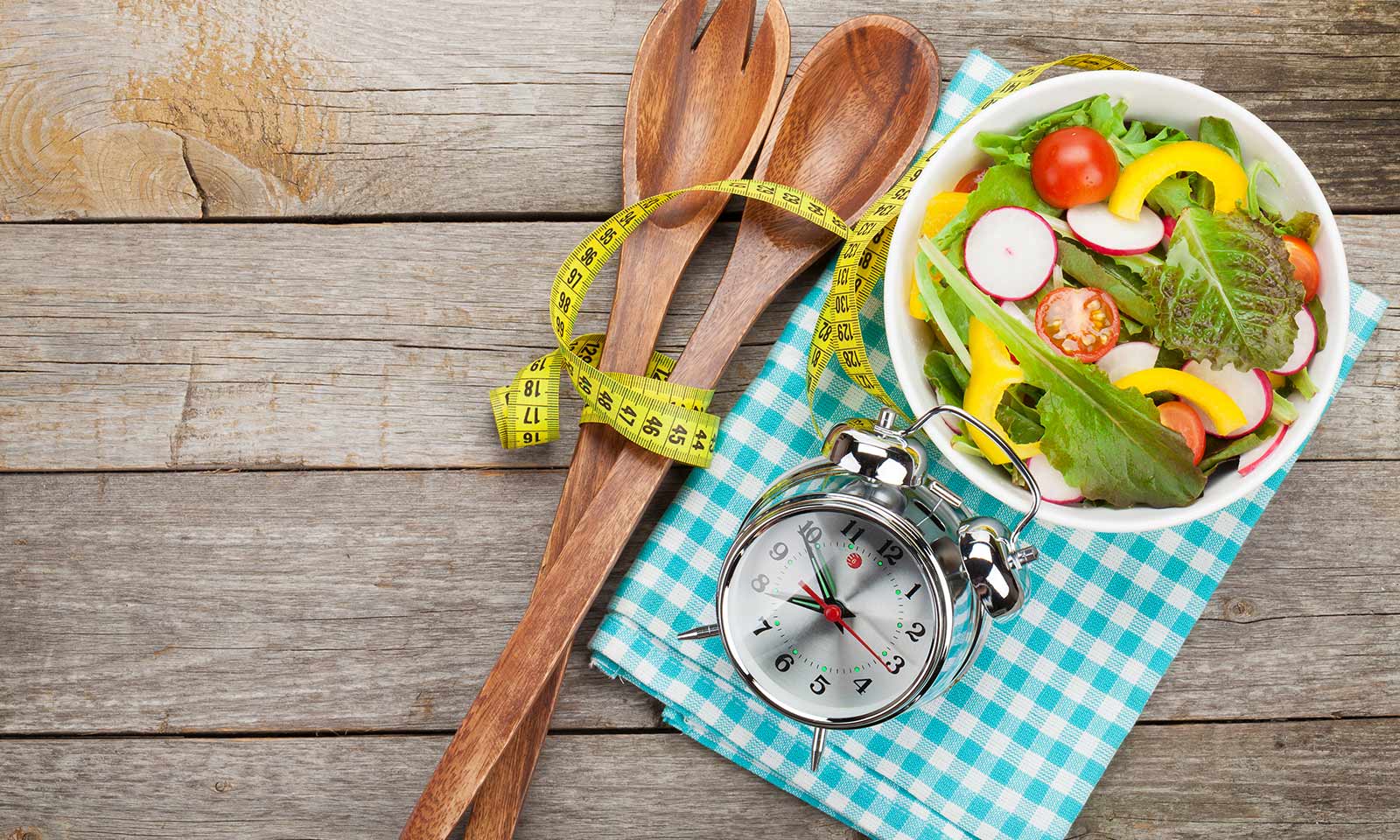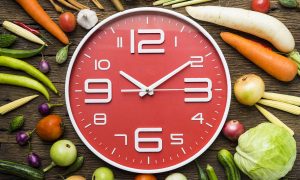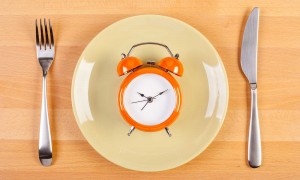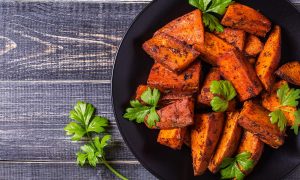5 Examples Of Different Intermittent Fasting Methods

|
|
These days it seems as if you can’t browse the web to simply check your emails, without being bombarded with various adverts and endorsements for diet plans, programs, and supplements, all claiming to be the next big thing for fat loss and muscle growth. Needless to say, the majority of these claims are completely bogus, which is why it’s so important to find a method of dieting that is not only effective, but that is also sustainable and enjoyable in the process. Let’s face it, most of us, if given the choice, would opt for much lower body fat percentages and much more lean muscle mass, and whilst we may work our butts off in the gym, working out 4, 5, 6, even 7 days per week on some occasions, sadly, it is our dietary and eating habits that often let us down. Even for those of you that are disciplined enough to be able to follow a healthy and balanced diet and nutritional program, after several weeks of eating the same foods, drinking the same drinks, and taking the same supplements at the same time, eventually your progress begins to slow down until it grinds to a halt, leaving you stuck in limbo when you eventually and inevitably hit a natural plateau. If you’re fed up of fad diets and hitting metaphorical brick walls in terms of progress, it may be time for you to try intermittent fasting. Intermittent fasting is not a new concept as it has been used by experts in the health and fitness field for many decades now. Despite this, it has only really caught on in terms of popularity, over the last decade or so. Contrary to popular belief, not all intermittent fasting diet protocols are the same, which is why we’ll be looking at what intermittent fasting is, as well as taking a look at five different protocols in the process. So, if you’re ready, let’s talk fasting.
What is intermittent fasting?

Intermittent fasting, or IF, is basically a method of eating in which you go through prolonged periods of fasting, and only eat whole foods at certain and specific times of the day, during various feeding windows. You basically fast and then feast, deliberately your caloric intakes only come to you during certain points of the day, or even week for that matter. Normally, when you consume a meal, energy and other nutrients find their way into the blood stream, where they stay for several hours. This means that the body can use this for energy whenever it likes. This means that when your next meal comes around, as your body will still be using the energy from before, it won’t need to burn calories from the new food, or from stored body fat, and so, rather than letting the new food go to waste, it quickly breaks it down and converts it into even more fat. If you’re in a fasted state however, there is no energy in the bloodstream at all, so whenever it needs energy, it will utilize stored body fat instead, which is actually the reason why we store fat in the first place.
Different intermittent fasting diet methods
As IF is now so popular, there are many different forms of IF diet plan to choose from, which is great for people who need a diet plan that can be tailored specifically to them. 5 different IF diet protocols include:
Alternate day fasting
Alternate day fasting is arguably one of the most popular IF methods currently utilized by people all across the globe, and it has provided some pretty amazing results so far as well. Put simply, alternate day IF means that you only fast every other day. What’s more, is the fact that there are several versions of alternate IF to choose from. Many of which will require you to alternate between 500 calories on fasting days, and normal calorie consumptions on non-fasting days. Just remember however, that on fasting days, you will feel hungry, and going to sleep hungry is not enjoyable in the slightest, so you will need to be mentally strong because if you blow it on your fasting days, even just one set back can ruin an entire week’s worth of progress.
The warrior diet

The warrior diet has a cool name, and in actual fact, it’s a pretty cool method of IF as well. With the warrior diet, you will fast for around 20 hours per day, and will only consume food during a four hour window. Whilst this may be extreme, don’t forget that for around 8 of those 20 hours, you will be asleep, but even so, it is pretty harsh. During the day, you obviously don’t starve completely, but you only consume very small amounts of raw vegetables and fruits in the day, and then in the evening, you consume one very large meal. It is very much a method of fasting and feasting, but that doesn’t mean you get to binge on junk. The warrior diet actually requires you to consume foods very similar to those on a paleo diet I.E Fruits, nuts, seeds, fish, meats, vegetables, etc.
Eat-Stop-Eat
Up next, we have the eat-stop-eat IF diet protocol, which requires you to basically follow an entire 24 hour fast, once or twice during each week. During these periods, you don’t consume a single whole food item, but can obviously consume calorie-free drinks, making sure to drink plenty of fresh water. After the 24 hours are up however, you simply return to normal eating habits. It is worth pointing out however, that you must ensure that you eat “normally” on days when you eat, because if you use these days as excuses to binge eat and binge on junk food, you won’t lose weight and you’ll make yourself ill in the process. Also, it’s worth planning when your fast will end, as some people prefer to plan their fast around breakfast, whilst others would prefer to end it during the evening around dinner time.
Leangains

As you can see by the name of this method of IF dieting, leangains is designed to help individuals burn body fat, whilst increasing lean muscle mass in the process, which as you probably know, is not an easy thing to do. For this method of fasting, women will fast for 14 hours, whereas men will fast for 16 hours during each day. After the fasting windows are over, for the remaining 10 – 8 hours, the individuals will then eat as normal. What’s important with leangains, is that, during the fasting windows, you consume NO calories at all, so not even a tiny handful of nuts will be allowed. You obviously drink plenty of water and can consume calorie-free beverages, including black coffee. Obviously most people fast through the night and into the next day to help make life easier, and that way, it means that they’re also going to sleep on a full stomach. You of course adapt the diet plan based around your own preferences and personal circumstances, but the thing to remember is that you must be consistent with your fasting and feeding times. Failing to do so will mean that your hormones could become disrupted and unbalanced, which is not what you want. The types of foods you consume are determined by the time and frequency of your workouts. On non-training days, fat intakes should be higher than carb intakes, and vice versa on training days. Protein should remain consistently high as it is vital for muscle growth and repair.
The 5:2 diet
Over the last couple of years, the 5:2 diet has gained a great deal of popularity and has been endorsed by countless celebrities, fitness experts, and various TV shows as well. With he 5:2 diet, the basic premise is that, for 5 days of the week, you eat normally, just as you would any other day, but for two days of the week, calorie consumptions should be no higher than 500 – 600 calories max. Women are recommended to consume 500 calories on fast days, whereas men should aim for 600 calories. So, as a rough guide, on every other day of the week, other than Tuesdays and Thursdays, you may eat normally, but on Tuesdays and Thursdays, you should consume just 500 – 600 calories, which would probably consist of 2 x 250 – 300 calorie meals each day. The key to making this diet work is making sure that, on non-fasting days, you do actually eat normally and don’t decide to eat an entire chocolate cake for breakfast, a pizza for lunch, and a greasy takeout for dinner. The odd cheat meal here and there is fine, but cheat days just won’t cut it on the 5:2 diet.














